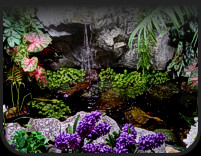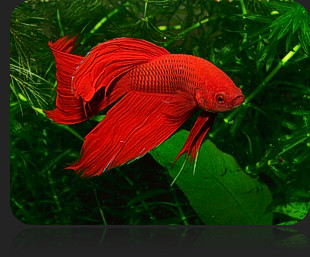 |
home page Aquarium Adventure carries the widest selection of aquariums, fish, corals & plants. |
| ABOUT USAQUATIC PROFESSIONALSLOCATIONSTIP SHEETSFRANCHISE |
 |
||
| We offer everything from do-it-yourself pond equipment and starter sets to full custom installation packages. Our experts can answer those really tough questions about installing and maintaining garden ponds...a service the hardware stores cannot provide. Come visit our store and take a tour! |
||
 |
||
 |
||
|
||
 |
||
Starting Right For best results you should start by filling your Betta container with “aged” or “conditioned” water found in existing aquariums. Typically Bettas come from slow moving waters, even the edges of rice paddies in S.E. Asia. Tap water is suitable for them, but it should be treated to rid it of chlorine or chloramines prior to pouring it into the container, which is harmful to the fish. There are many varieties of Bettas available (Split Tails, Half Moon, Round Tail and Crown Tail to name a few) and almost every color under the rainbow. An Aquarium Adventure fish specialist can help you select a good specimen.
In nature Bettas feed on insects at the surface, so small pellet food or worms (such as tubifex or blood worms) will be the best choice for them. Be careful with your feedings. Overfeeding will cause the water to become cloudy and smelly from the accumulation of decayed food. This water will, in time, become harmful to the fish. When feeding, remember that less is best. A safe recommendation is to feed 2 to 4 pieces of food every other day. Cleaning Your Beta Container The remaining water should be discarded. Once the display container is empty, it can be rinsed out with fresh tap water. Never use a cleaner or chemicals of any type to clean with as these, even in trace amounts are toxic to fish. Once the display container has been rinsed, 1/3 of the container can be filled with new, fresh tap water. Remember, the water must be conditioned to remove chlorine and/or chloramines. The water should be at room temperature. Carefully, pour the Betta and the old remaining 2/3’s water back into the display container.
View All Fish Keeping Tip Sheets
|
||

 Tips on Keeping the Siamese Fighting Fish
Tips on Keeping the Siamese Fighting Fish Feeding
Feeding Since a Betta container or bowl generally does not have a filtration system, you must be very careful when cleaning. Every 5 to 7 days, you should change part of the water. Pour the top 2/3 of the water from the Betta display container into a temporary holding container (plastic or glass). Then carefully transfer the Betta, using a net, into this holding container while the rest of the bowl is cleaned.
Since a Betta container or bowl generally does not have a filtration system, you must be very careful when cleaning. Every 5 to 7 days, you should change part of the water. Pour the top 2/3 of the water from the Betta display container into a temporary holding container (plastic or glass). Then carefully transfer the Betta, using a net, into this holding container while the rest of the bowl is cleaned.